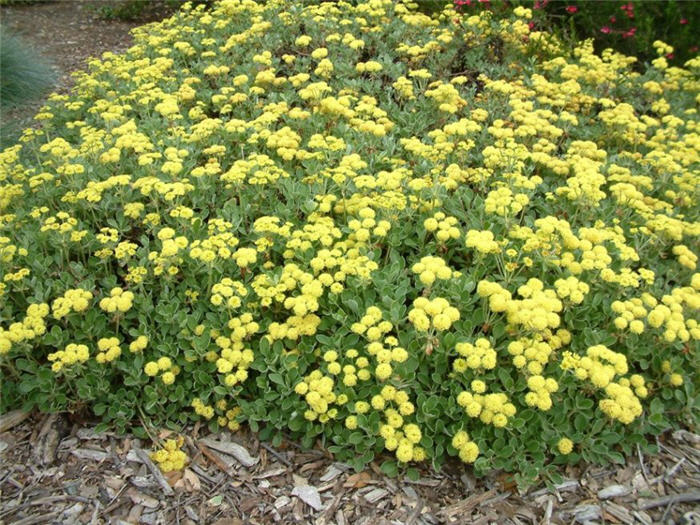| Botanical Name: Eriogonum umbellatum | |
| Common Name: Sulfur Buckwheat |

-
Anatomy
-
Culture
-
Design
Plant Type
Shrub, Perennial
Height Range
1-3'
Flower Color
Yellow
Flower Season
Spring, Summer, Fall
Leaf Color
Grey Green
Bark Color
Brown
Fruit Color
n/a
Fruit Season
n/a
Sun
Full, Half
Water
Medium
Growth Rate
Fast
Soil Type
Loam, Rocky, Unparticular
Soil Condition
Average, Rich, Poor, Well-drained, Dry
Soil pH
Neutral
Adverse Factors
n/a
Design Styles
English Cottage, Meadow, Mediterranean, Ranch, Seascape
Accenting Features
Showy Flowers
Seasonal Interest
Spring, Summer, Fall
Location Uses
Perennial Border, Parking Strip, With Rocks
Special Uses
Erosion Control, Small Spaces
Attracts Wildlife
Butterflies
Information by: Stephanie Duer
Photographer:
Photographer:
-
Description
-
Notes
A Utah native, Sulfur Buckwheat has shown itself to be very adaptable to urban landscapes, which is a good thing as this plant as so much going for itself. Sulfur yellow flowers are in profusion mid to late summer, attracting butterflies and other beneficial insects. Foliage is olive green, turning russet in autumn and persisting into winter. An excellent perennial for a sunny parkstrip. Attracts bees, butterflies, beneficial insects, and birds. There are a great number of varieties in this species, with slightly differing heights, flower time and color, and leaf shape. Fragrant. Attractive to butterflies and bees. Birds love the seeds, so don't be eager to deadhead.
Grow in well drained soil in full sun to light shade, though, if planted in shade take extra care to not over water. Delay removing spent flowers until late winter or early spring as migrating and overwintering birds will appreciate the seeds. Very tolerant of poor, rocky or gravelly soils; it is most important that the soils are well drained. Hardy to -0 degrees. Also listed as E. polyanthum. Flowers dry well and are attractive in arrangements or for crafting (though you would have to decide between the competing interests of the birds and butterflies...) Not technically an evergreen, but the leaves persist well into the fall and winter months.